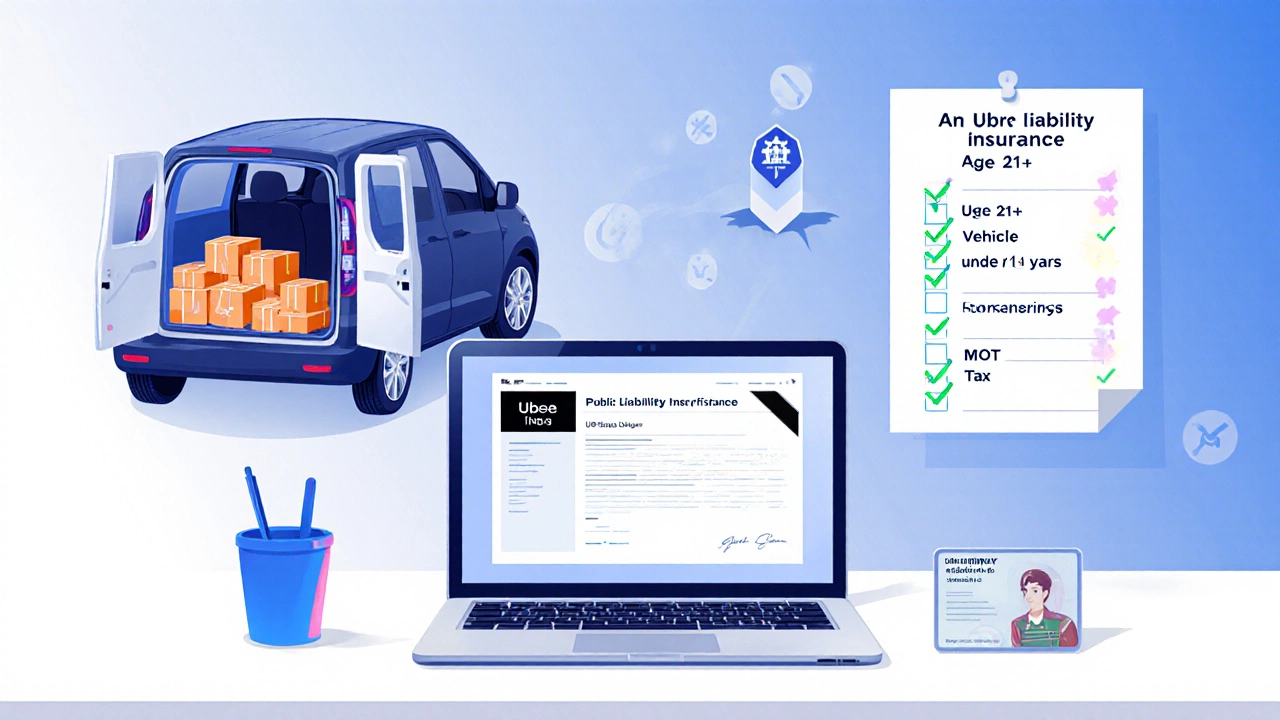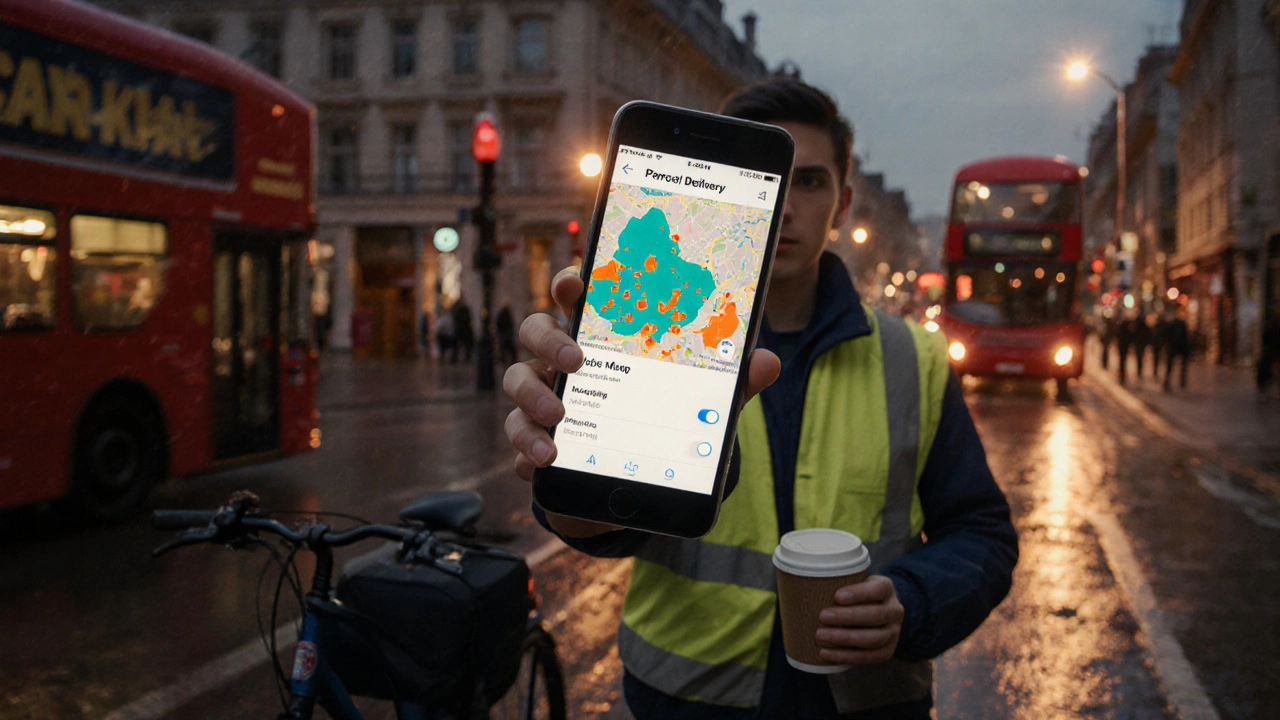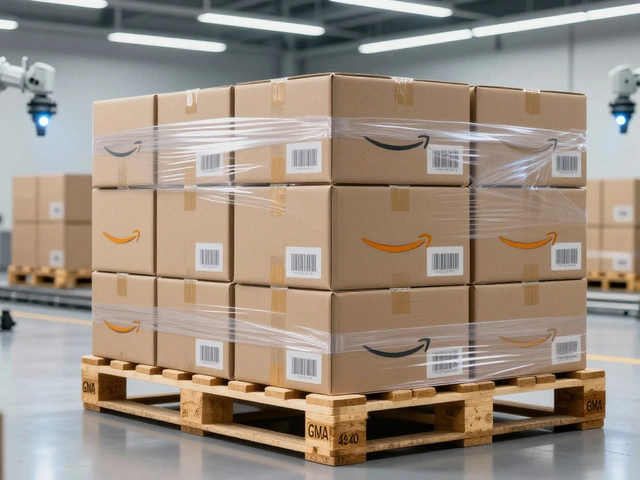Uber Courier Earnings Calculator
Estimated Daily Earnings
Quick Takeaways
- Uber offers three delivery‑focused services in the UK: Uber Eats (food), Uber Direct (packages) and Uber Freight (large freight).
- You can sign up as a driver in minutes, but you need a compatible vehicle, insurance and a right‑to‑work status.
- Pay is per‑delivery, usually £4‑£9 for a small parcel, with bonuses for peak times.
- Legal requirements include public liability insurance, proper vehicle registration and compliance with UK transport rules.
- Compared with traditional couriers, Uber gives flexibility but lower average earnings for high‑volume routes.
When you think about gig‑working, Uber is a global ride‑hailing platform that also runs several delivery services that let you pick up and drop off parcels on your own schedule. In the UK the brand is best known for Uber Eats a food‑delivery app that connects restaurants, couriers and customers, but it also runs Uber Direct a same‑day parcel delivery service for retailers and e‑commerce brands. For larger loads there’s Uber Freight a marketplace that matches truck owners with shippers needing freight transport. The question most people ask is whether any of these can be used as a Uber courier gig for everyday parcel deliveries.
How Uber’s Delivery Services Work in the UK
Each Uber service follows a similar app‑based flow:
- Log into the appropriate driver app (Uber Driver for rides, Uber Eats for food, Uber Direct for parcels).
- Accept a delivery request that shows pickup location, drop‑off address and estimated payout.
- Navigate to the sender, collect the item, verify it in the app, and then drive to the recipient.
- Mark the delivery as complete and receive payment directly into your bank account.
For parcel‑focused work, Uber Direct is the product you want. It lets retailers upload orders, then pushes them to nearby couriers. The average parcel size it accepts is up to 30cm×30cm×30cm and under 20kg - perfect for small e‑commerce shipments.
Signing Up to Become an Uber Courier in Britain
The registration process mirrors that of becoming a rideshare driver, but with a few extra steps for parcel handling:
- Eligibility: Must be 21years old, have a full UK driving licence, and the right to work in the UK.
- Vehicle requirements: A car, van or scooter that meets Uber’s age and condition standards (usually under 10years old, road‑worthy, and with sufficient cargo space).
- Insurance: You need a valid Public Liability Insurance policy covering goods in transit - many couriers opt for a £1million policy.
- Background check: Uber runs a DBS‑style check on all UK drivers.
- App setup: Download the Uber Driver app for managing deliveries, tracking earnings and accessing support, then toggle on the “Parcel Delivery” option.
Once approved (usually within 24‑48hours), you can start accepting orders in any city you’re registered for - for example, Bristol a major UK hub with a growing gig‑economy market. The app shows you a heat map of demand, so you can position yourself where deliveries are most frequent.
Legal and Insurance Essentials
The UK has clear rules for anyone transporting goods for payment. Here are the non‑negotiables:
- Public Liability Insurance - covers damage to third‑party property or injury. Uber supplies a minimum level for rides, but you must add coverage for parcels yourself.
- Vehicle tax and MOT - your vehicle must be taxed and have a valid MOT if it’s over three years old.
- Freight Licence - not required for parcels under 3,500kg, but you must register as a “goods vehicle for hire” with the DVLA if you regularly make paid deliveries.
- Data protection - keep customer addresses confidential; the UK GDPR applies to any personal data you handle.
Failing to meet these can result in fines or loss of your driver account. Most seasoned couriers keep a digital copy of their insurance certificate in the vehicle and use a dash‑cam for added protection.

Earnings vs. Traditional Courier Services
To decide whether Uber is worth it, compare the typical payout per delivery and the ancillary costs. Below is a snapshot of how Uber Direct stacks up against two well‑known UK couriers - Hermes a parcel‑delivery network focusing on low‑cost shipments and DHL Express a premium international courier with fast‑track services.
| Service | Min. Parcel Size | Typical Payout/Delivery (Driver) | Delivery Window | Insurance Provided |
|---|---|---|---|---|
| Uber Direct | Up to 30cm×30cm×30cm | £4-£9 (plus peak bonuses) | Same‑day (1‑3hrs) | Driver must supply own public liability |
| Hermes | 15cm×15cm×15cm | £3-£6 (per‑parcel rate) | Next‑day (up to 24hrs) | Covered under company policy |
| DHL Express | Any size (up to 70kg) | £7-£15 (premium rates) | Same‑day or 24‑hr express | Full cargo insurance included |
Uber Direct gives you control over when you work, but the per‑delivery fee is lower than DHL’s premium rates. Hermes is cheaper for the shipper but offers modest driver pay and longer delivery windows.
Pros and Cons of Using Uber for Parcel Delivery
Pros
- Flexibility - you decide your hours and can toggle the app on/off instantly.
- Fast onboarding - the digital verification process is streamlined.
- Real‑time demand map - helps you chase the busiest zones.
- No need for a large fleet - a single car or van works.
Cons
- Variable earnings - low‑pay periods can happen during quiet hours.
- Insurance costs are on you - unlike some traditional couriers that bundle coverage.
- Limited parcel size - oversized items need a different service (e.g., Uber Freight).
- Driver support can be slow during peak demand spikes.
Tips to Maximise Your Uber Courier Income
- Start during peak windows: Lunch (11am‑2pm) and early evenings (5pm‑9pm) see the highest order volume.
- Stay near commercial districts: Retail parks, warehouses and city centres generate more requests.
- Maintain a clean vehicle: A tidy interior reduces the chance of customer complaints and boosts tip potential.
- Leverage bonuses: Uber often runs “Complete X deliveries in 2hours” promotions - plan your shift accordingly.
- Track expenses: Use a simple spreadsheet to log fuel, insurance and mileage; you can claim these on your self‑assessment tax return.
Is Uber the Right Choice for You?
If you value freedom over a guaranteed salary and already have a compliant vehicle, Uber Direct can be a solid side‑hustle. However, if you need consistent high‑value deliveries or want comprehensive cargo insurance included, a traditional courier partner might be a better fit.
Frequently Asked Questions
Can I deliver parcels with a scooter?
Yes, Uber Direct allows scooters for parcels under 10kg as long as the scooter complies with UK road regulations and you have appropriate insurance.
Do I need a separate Uber account for courier work?
No. You use the same Uber driver account and simply enable the “Parcel Delivery” option inside the app.
How is payment processed?
Payments are automatically transferred to your linked bank account every week. You can view a detailed earnings breakdown in the driver dashboard.
What tax obligations do I have?
As a self‑employed contractor you must register for Self‑Assessment with HMRC, keep records of income and allowable expenses, and submit an annual tax return. You’ll pay Class2 National Insurance if your profits exceed £12,570.
Can I use Uber Direct for large items?
For items over 20kg or larger than 30cm each side, you need to switch to Uber Freight, which connects you with truck owners for bigger loads.





